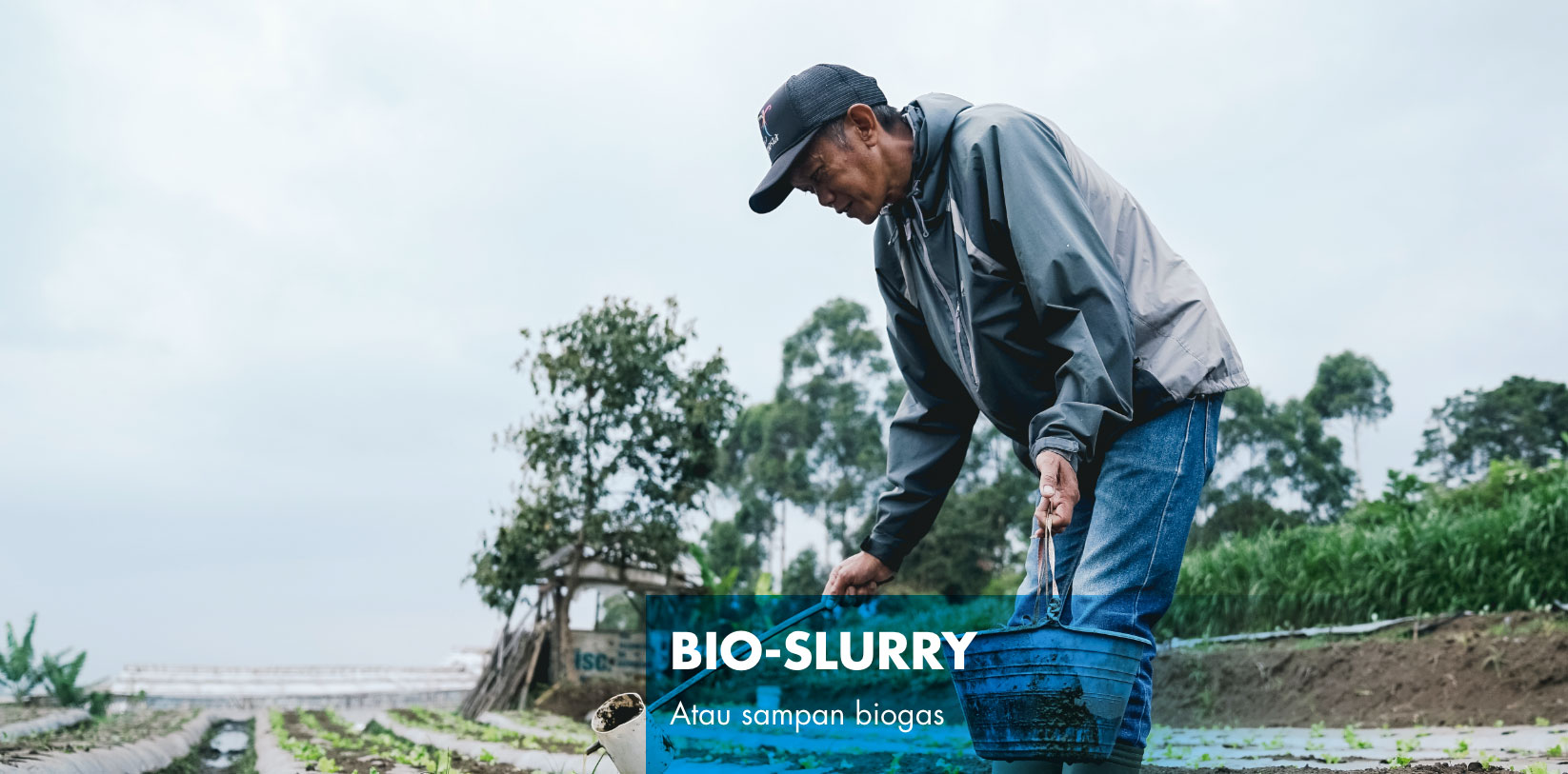Bio-Slurry
FAQ
1. How do you use bio-slurry?
Two types of bio-slurry can be used as fertilizer. These differences differentiate the way they are used. Among others:
Solid or dry bio-slurry
The right time to use bio-slurry is when cultivating the soil for the first time before planting. You do this by mixing the soil with bio-slurry. Also, bio-slurry mixing can also be done in the middle of the growing season. To use solid bio-slurry, it is better to dry it first for about 40 days in direct sun.
Solid bio-slurry can be applied as a fertilizer or mixed into the soil when processing it for the first time. Besides, it can also be done by mixing it in the mulch hole.
For solid bio-slurry, it can also be used as a mixture for non-cattle animal feed such as poultry and pork. Part of the ammonia nitrogen in the bio-slurry can be processed by the growing bacterial biomass converted into amino acids. Also, during the fermentation process, the bio-slurry can produce vitamin B12 suitable for livestock development.
Liquid or wet bio-slurry
Besides being used as fertilizer, wet bio-slurry can also be used for pesticides. How to use it is easy; you can pour it on the part of the land that is planted regularly. To get liquid bio-slurry, you need to mix it with water. The mixing ratio can be 1: 1 or 1: 2.
However, before use, the liquid bio-slurry that has just come out of the outlet is good to be deposited for one week. This deposition process is useful for removing gases that are not needed by plants and soil.
2. How is the bio-slurry formation process?
Mainly, bio-slurry as the final waste from the biogas process that can no longer produce gas. In order to run biogas, manure and organic waste are needed, which are still fresh and able to produce methane gas. Although bio-slurry is no longer required in the process but is still rich in nutrients that are good for the soil.
From the biogas product, bio-slurry will come out of the outlet pipe in two forms. The first is solid, and the second is liquid. These two types have no difference in nutrition or quality. The only difference is the amount of water and dirt that creates texture.
3. What nutrients does bio-slurry have?
| No. | Type of Bio-Slurry | Liquid Based Analytics | |||||
| Bahan Organik | C-org | N-Tot | C/N | P2OS | K2O | ||
| (%) | (%) | (%) | (%) | (%) | (%) | ||
|
|
Bio-Slurry (Pig) | – | 52.28 | 2.72 | 21.43 | 0.55 | 0.35 |
|
|
Bio-Slurry (Cow) | – | 47.99 | 2.92 | 15.77 | 0.21 | 0.26 |
| No. | Type of Bio Slurry | Dry Based Analytics | |||||
|
|
Bio-Slurry (Pig) | 65,58 | 15,60 | 1,57 | 9,97 | 1,92 | 0,41 |
|
|
Bio-Slurry (Cow) | 68,59 | 17,87 | 1,47 | 9,09 | 0,52 | 0,38 |
|
|
Compost (Cow Bio-Slurry) | 54,50 | 14,43 | 1,60 | 10,20 | 1,19 | 0,27 |
4. How to care for bio-slurry?
Bio-slurry does not need a complicated maintenance process. Because all procedures have been running in the biogas reactor and ready for use.
When in the reactor, all biogas raw materials in the form of manure and organic waste have been processed to produce methane gas to produce biogas. After the sewage and organic waste no longer have gas, all raw materials will exit through the slurry outlet to the slurry pit or slurry storage area.
From this slurry pit, the slurry can be used as animal feed and fertilizer. The dirt and organic waste that has entered the slurry pit no longer contains odors because all the gas has been processed into biogas. Usually, users make a cover on the slurry pit so that it is not exposed to direct sunlight.

